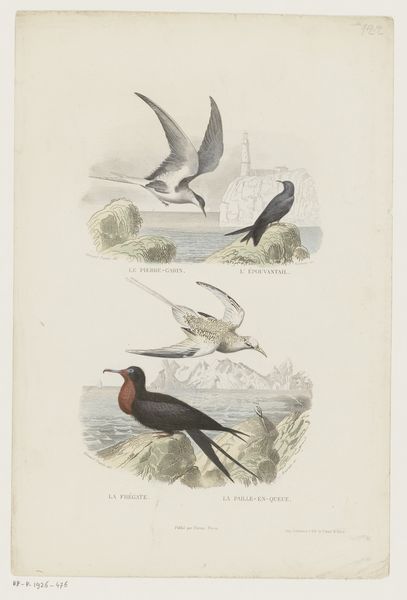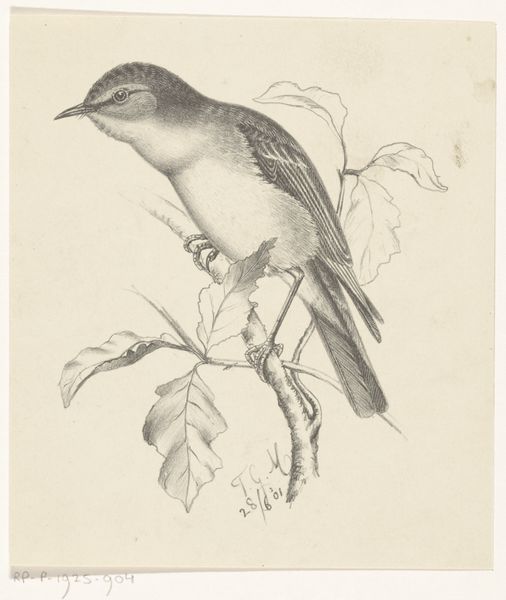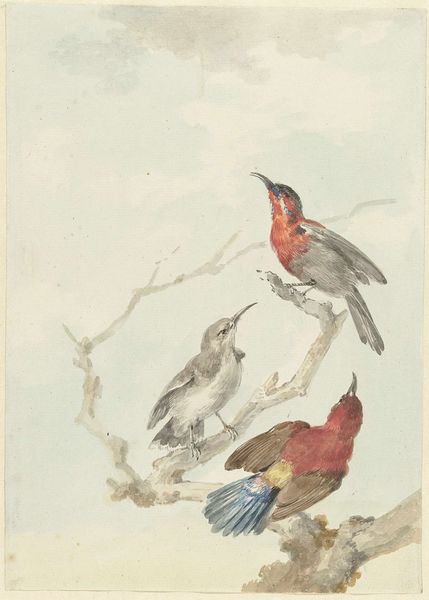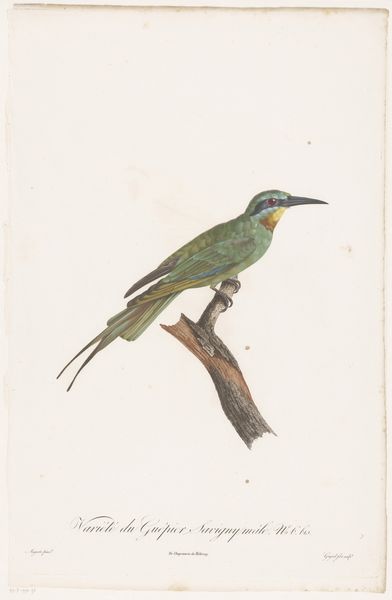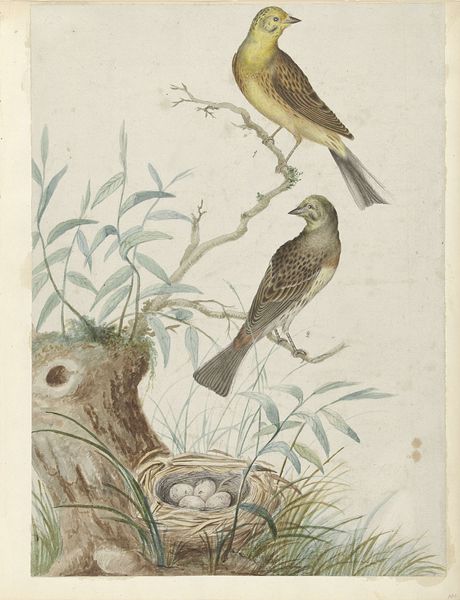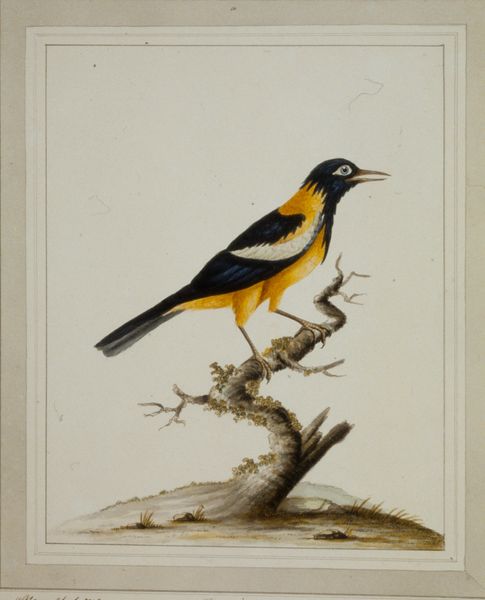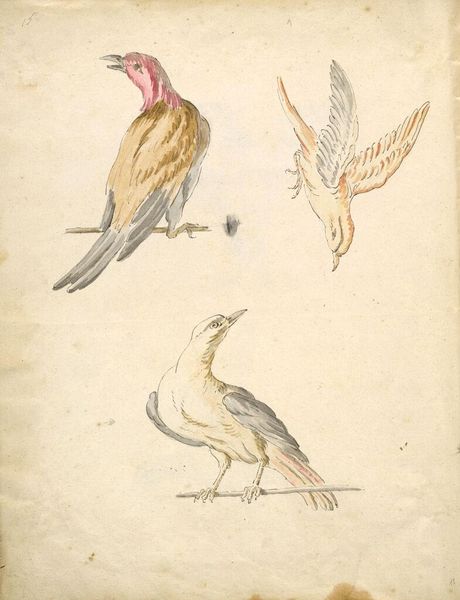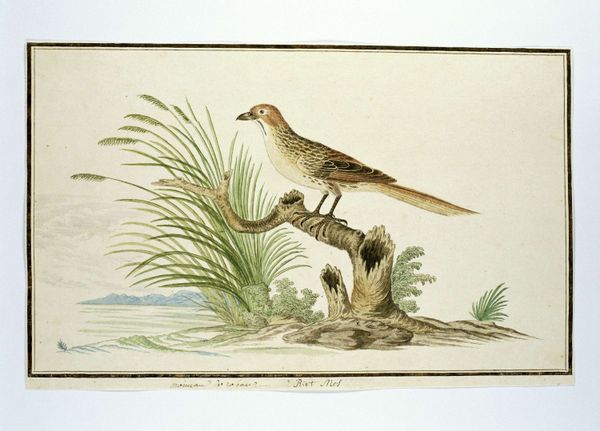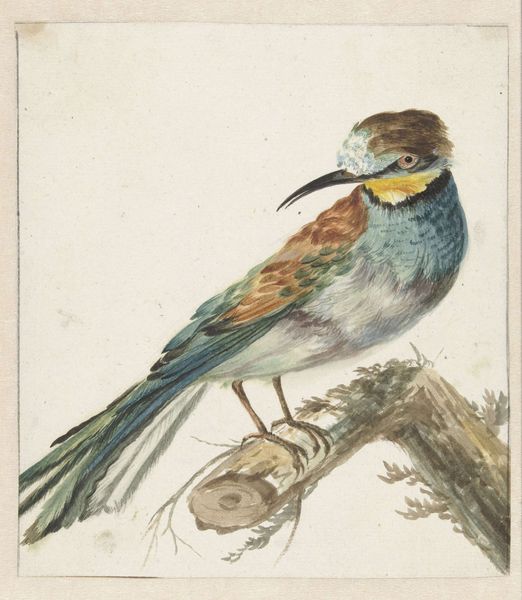
drawing, coloured-pencil, watercolor
#
portrait
#
drawing
#
coloured-pencil
#
water colours
#
landscape
#
watercolor
#
coloured pencil
Dimensions: 108 mm (height) x 177 mm (width) (bladmaal)
Curator: This delightful piece is titled "To studier af en ellekrage og to studier af en gøg," which translates to "Two studies of a roller and two studies of a cuckoo," created by P.C. Skovgaard in 1848. It appears to be watercolor and colored pencil on paper. Editor: My first impression is that there is something charmingly unfinished about it. It's like we're catching a glimpse of the artist's process, seeing the birds emerge from the page. There are these two outlined studies, then the lower two studies of the roller and the cuckoo have some beautiful, full color. Curator: Indeed, Skovgaard, primarily known for his landscapes, used these studies to more closely examine elements in nature, understanding the finer details of birds to be accurate when placed within the grand landscape compositions. Editor: It feels relevant to highlight how works on paper such as this one, made during Skovgaard's time, acted almost like field notes. This study offers a lens to consider the relationship between natural environments and Danish national identity formation. It provokes a wider understanding about 19th-century Romanticism through an appreciation and promotion of folk culture, emphasizing landscapes. Curator: Precisely. Think of Skovgaard’s role within the artistic and intellectual milieu that valued national romanticism during that time. This piece gives us insight into the artistic practice of detailed observation—essential in capturing not just the superficial likeness, but the spirit of the land. These birds, now documented on paper, might show up later as part of an idealized representation of Denmark’s rural countryside. Editor: Absolutely, but looking at it through a contemporary lens, I can't help but question who this idyllic representation was *for*, and who was left out of that romantic vision? Who could even enjoy those spaces? Understanding Skovgaard's wider social positioning will also reveal other potential dynamics in the piece too, which is the exciting part about bringing current theories to past works! Curator: That's an excellent point, reflecting how artworks gain enriched relevance and interpretations over time through various societal evolutions. This intimate peek into Skovgaard's process definitely highlights the intersection of artistic vision and broader socio-political undercurrents. Editor: Agreed, it encourages a dialogue between our present and the past; ultimately questioning our understandings of historical and cultural artworks such as this.
Comments
No comments
Be the first to comment and join the conversation on the ultimate creative platform.

